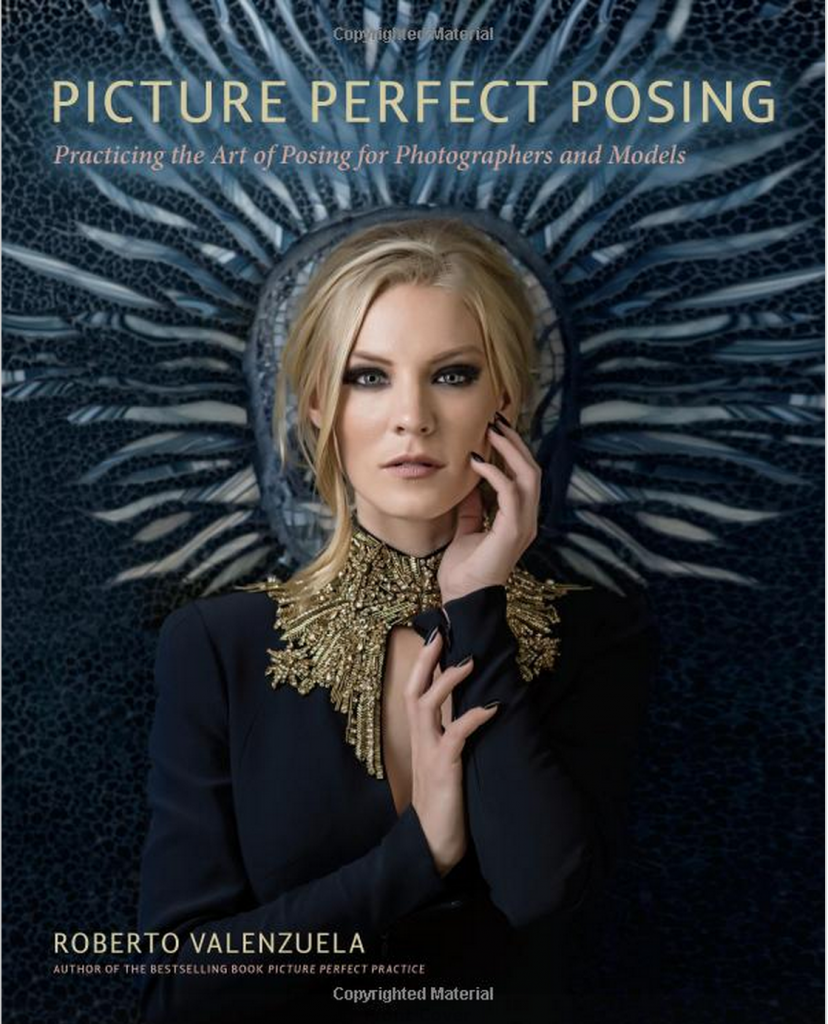 Picture Perfect Posing by Roberto Valenzuela is not a book about the perfect poses, which is almost useless to anyone but the faddist. It’s a book about the building blocks of them and it’s a very effective instructor.
Picture Perfect Posing by Roberto Valenzuela is not a book about the perfect poses, which is almost useless to anyone but the faddist. It’s a book about the building blocks of them and it’s a very effective instructor.
Posing, like the rest of photography, is not a set of hard and fast rules. It’s more like an intuition. What looks right and what looks best is largely a matter of opinion and context. Nevertheless, as a concept, posing encompasses a lot. Posing on intuition alone is likely to leave some undesirable qualities behind, so anyone who is serious about portrait and wedding photography will eventually have to put a lot of thought into how to pose their subjects.
No professional photographer shoots for 10 years without developing a set of guidelines for themselves about posing, and I’m certainly no exception. My posing style first developed out of a lack of confidence around the shape of the human body. Anticipating and planning what shapes the human form could make, and what meaning those shapes carried, felt daunting early on. To compensate, I shifted my focus from absolute proficiency in the pose, to generating authentic interactions with each other, and me–something I was already very good at.
Over the years, I developed more useful guidelines to govern things like shape and context in my portrait and wedding photography. But, I’ve left a lot of it to intuition as well. Valenzuela’s perspective on posing is more thorough and rational. And, much of the time, it jives with my intuitions as well. Having read the book, my skills feel more organized and focused.
Valenzuela divides the task of posing into a group of 15 loose principles which he calls P3S (picture perfect posing system). They are, roughly interpreted: Keep the spine straight; distribute weight unevenly; avoid 90 degree angles; watch the direction of the eyes, chin and collar bone; leave gaps between the elbows and waist; arms and hands should have logical context; fingers and hands should be free of tension; avoid mystery hands; don’t mirror hands; make sure the subjects are positioned for their own embassies; whatever is closest to the camera will be a dominant focus; don’t let one subject overpower another; noses should be a differing angles; the subject should be at least as bright as the brightest object in the scene; your subject should seem as though they are doing or feeling something; And finally, pretty much all that stuff, but with couples.
I imagine you could probably model your photography practice after just that quick overview of whats in this book, and you’d start getting better results with your posing. But that’s really not even the half of it. Valenzuela has really put together an excellent collection of areas to focus attention and create more deliberate and mindful poses. It’s worth the time to read whether you’re shooting professionally, or just starting out with posing.

Recent Discussion